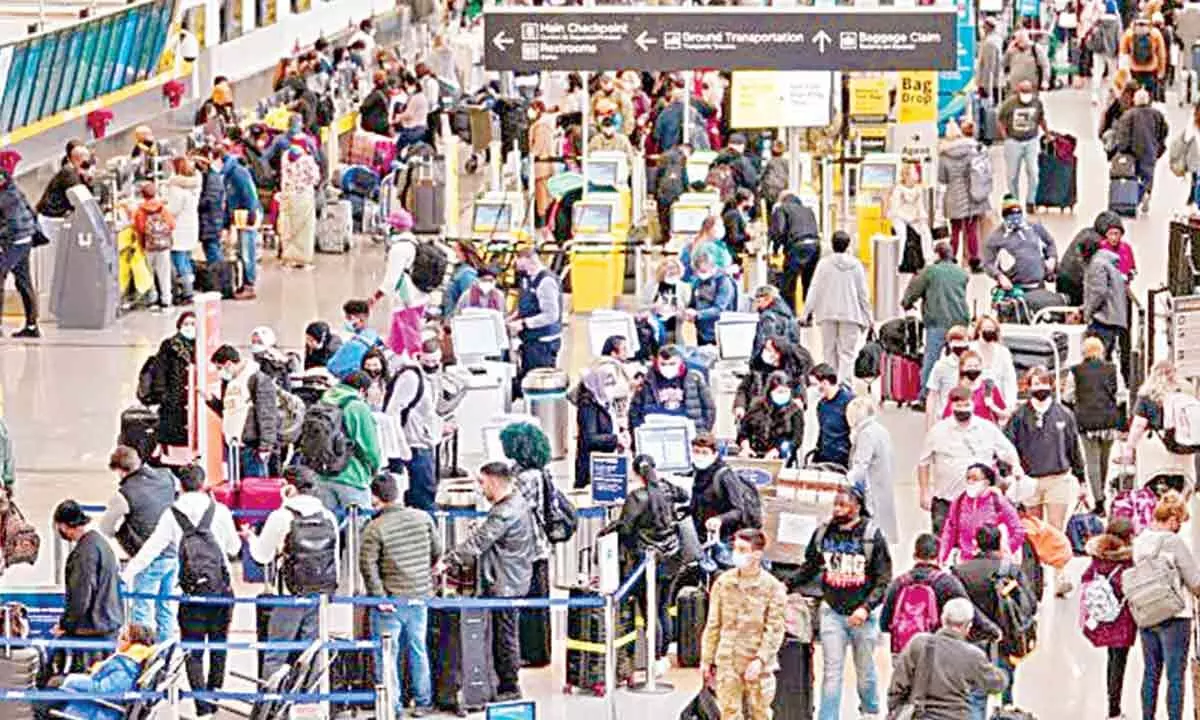Staff crunch-hit airlines, airports unable to cope with surging traffic
If they can pull together this summer, there is a light waiting for them at the end of the tunnel
image for illustrative purpose

The recent momentum created by the lifting of many health measures and the relaxation of most travel restrictions globally, has renewed industry optimism. It, however, has also exposed even more the uneven recovery as major aviation markets in Asia-Pacific lag behind their Western counterparts as they continue to be in part closed to international traffic.
There is positive news on this front as global passenger traffic is expected to improve significantly in 2022 reaching 77 per cent of what it was in 2019, with traffic for 2022 forecast to total 7.1 billion.
For the full year 2021, the Covid-19 outbreak removed 4.6 billion passengers compared to 2019, representing a loss of 50.3 per cent of global passenger traffic. Over the first two years of the pandemic, the Covid-19 outbreak reduced the number of passengers at the world's airports by 10.2 billion. ACI World Director General Luis Felipe de Oliveira said, "Considering my recent trips and based on the latest data, there is no doubt that many travellers are eager to resume travelling - and the early summer volumes are a testament to it. With the combination of 'vacation deprivation' and an upsurge in confidence in air travel provided by increased vaccination rates and safety measures, the relaxation of travel restrictions will help boost the propensity for air travel and fuel the industry's recovery. With many countries taking steps towards the return to certain normality, lifting almost all the health measures and travel restrictions, we expect a jump in air travel demand in the second half of 2022."
Even with the current traffic trends, much uncertainty still surrounds the recovery of the aviation industry, especially in the medium to long term. While many indicators are pointing toward the recovery, the industry is also facing some significant headwinds including geopolitical conflicts, higher inflation, the risk of economic downturn, supply chain disruptions, labour shortages and potential new outbreaks.
Despite the downside risks, the industry remains confident that the potential for recovery to 2019 levels within two or three years is foreseeable. While some markets have experienced a robust recovery, on average and under the current projection, accounting for the slower than expected first quarter of 2022 due to the Omicron wave, global passenger traffic is expected to reach back to 2019 levels in late 2023 with the full-year recovery to 2019 levels in 2024.
The overall recovery will mainly be driven by the recovery of domestic passenger traffic but will be hampered by the recovery stagnation in Asia-Pacific and a slower recovery in global international travel (globally, domestic traffic accounted for 58 per cent of total passenger traffic in 2019.
Boeing has released a new market outlook that projects operators ordering more than 40,000 new commercial airplanes over the next 20 years. It is very likely that every airline operating at London Heathrow will be holding passenger bookings that are in excess of 80 per cent of available capacity. Airlines should stop selling any more seats for travel until the 11th September, so airlines can cash in on the higher-yielding last-minute sales through their revenue management systems. Airlines will also now have to cancel more planned services and re-accommodate those passengers affected onto other alternate flights which is a challenge.
According to OAG, a conservative yield of $400 per passenger departing from Heathrow equates to lost revenue of over $550 million. The cost of attempting to rebook affected passengers is around $50 per head to rebook - which is another unexpected cost for airlines. Airlines, airports and suppliers are likely to face short-term challenges.
However, the Government is not without blame here. Airports and airlines had to cut back operations to survive and were given little to no direction on when travel restrictions would be lifted. They argue they had no way of preparing or re-hiring for the increased demand in the time they were given. There is no quick fix to the staff shortage as the onboarding process is more involved, with extensive security checks required before a new staff member can start. There is also a backlog of staff waiting to be processed due to the increase in applications.
The huge demand for flights has also brought about positive change. Dozens of new airlines have launched around the world over the past year, including Norse Atlantic Airways which has reportedly received 3,000 applicants for its first 50 pilot jobs!
Arguably the aviation sector suffered the most as a result of the pandemic. From that low, airlines and airports are now battling with the constant struggle to keep a surge of passengers flowing and planes in the air. If they can pull together this summer, is there a light waiting for them at the end of the tunnel?

